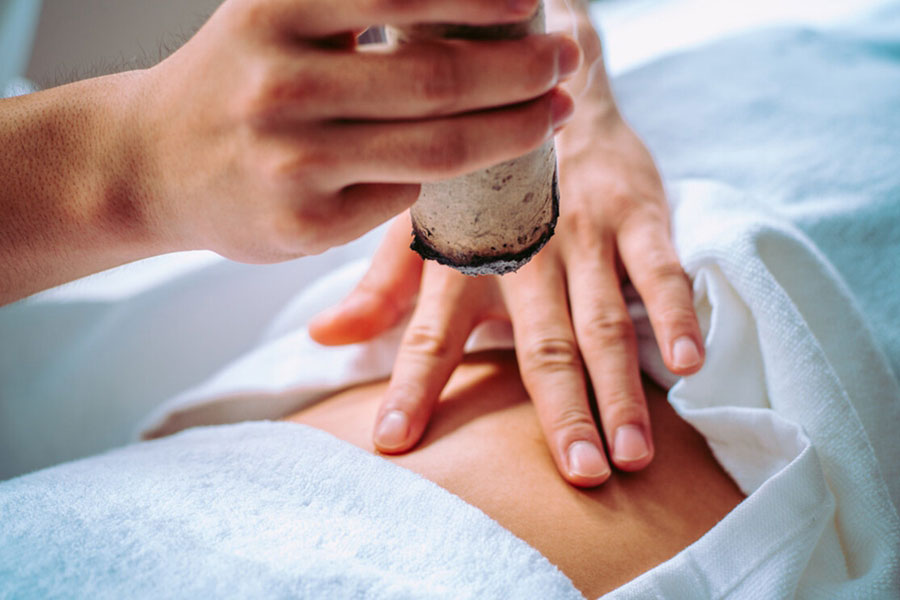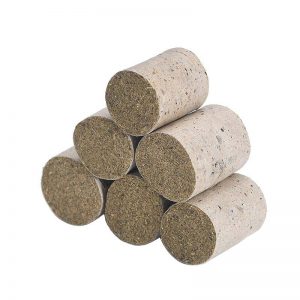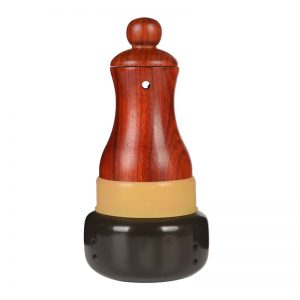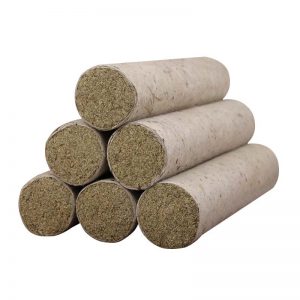Impotence is the inability of the penis to become sufficiently erect, or the inability to maintain an erection during sexual intercourse despite the presence of sexual desire. Impotence has many causes, including mental-emotional factors such as a lack of love or stress; physiological factors such as abnormalities in the erectile nerves; and diseases of the liver, kidney, heart, lung or other organs that influence sexual physiology.
Impotence has several causes according to TCM. The major cause is the deficiency of essence and qi, or deficiency of the mìng mén due to excessive sexual activity. Second, lack of nourishment to the genitals due to deficient qi and blood caused by damage to the heart and spleen from excessive thinking and grief, or to the kidney from excessive fright, can also cause impotence. Third, damp-heat pouring downward to the genitals can cause erectile dysfunction.
Clinical manifestations of Impotence
- Inability of the penis to become erect or maintain an erection, which hinders normal sexual activity.
- Often accompanied by mental fatigue, lack of strength, aching and weakness of the low back and knees, fear of cold, cold limbs, and tinnitus.
- There may also be spontaneous erections at night or in the morning. In this article, we do not cover impotence caused by organic disease or medication.
5 Acupuncture points for Impotence
The basic treatment principle is supplementing kidney qi. Acupoints are chosen based on the following principles: the kidney governs reproduction; the liver governs the free flow of qi.
1. CV 4 Acupoint (Guanyuan)
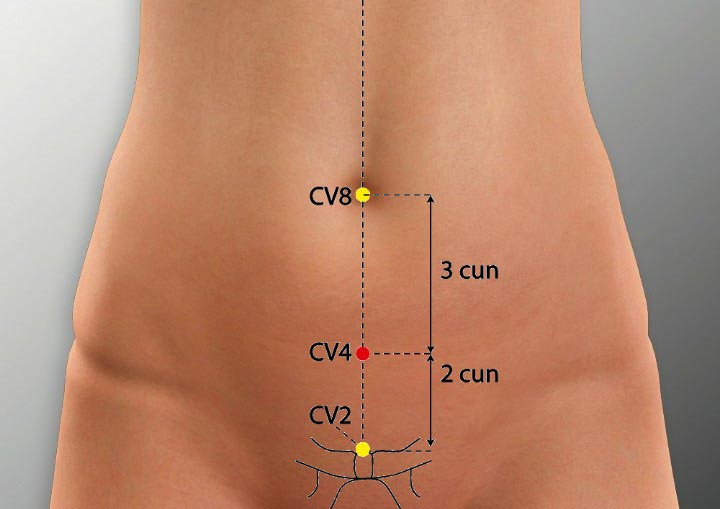
Location: On the lower abdomen on the anterior midline, 3 cun below the umbilicus.
Effect: Warms and supplements original qi, regulates and supplements yin and yang.
2. ST 30 Acupoint (Qichong)
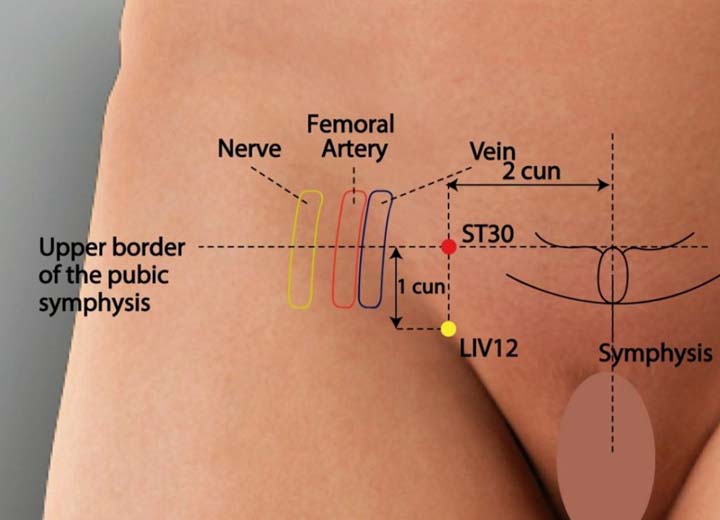
Location: Superior to the groin, 5 cun below the umbilicus and 2 cun lateral to CV 2.
Effect: Relaxes the penis and testes, harmonizes ying-blood.
3. BL 23 Acupoint (Shenshu)
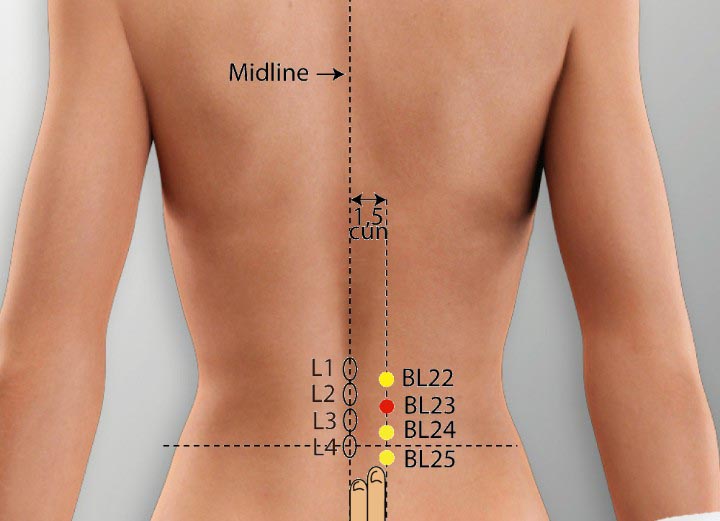
Location: On the low back, below the spinous process of the second lumbar vertebra, 1.5 cun lateral to the posterior midline.
Effect: Supplements the kidney, strengthens the waist, harmonizes yin and yang.
4. GV 3 Acupoint (Yaoyangguan)
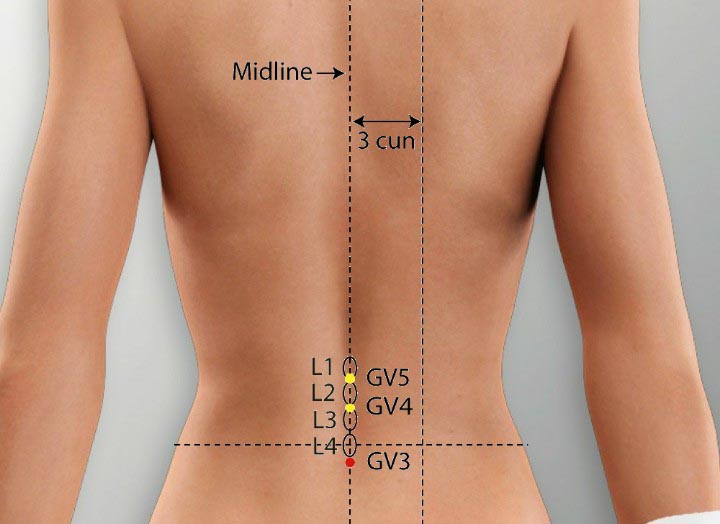
Location: On the posterior midline in the depression below the spinous process of the fourth lumbar vertebra.
Effect: Supplements the kidney, invigorates yang, boosts marrow.
5. SP 10 Acupoint (Xuehai)
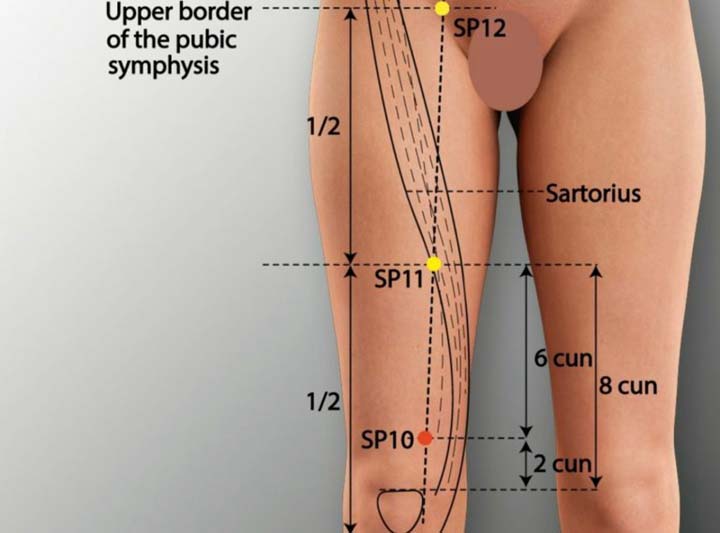
Location: On the medial thigh 2 cun superior to the medial side of the base of the patella, on the protuberance of the medial head of the quadriceps muscle.
Effect: Nourishes blood, invigorates the blood, dispels stasis.
Moxibustion treatment methods
- Mild moxibustion on CV 4 and ST 30. The patient should feel heat penetrating deep into the abdomen. CV 4 and ST 30 are important acupoints for regulating the lower jiao, and together can warm and supplement original qi, relax the sinews, and harmonize blood.
- Double-point mild moxibustion on BL 23. The patient should feel heat penetrating deeply into the abdominal cavity, or expanding over the lumbosacral region or lower extremities. BL 23 is where the qi and blood of the kidney gathers at the back, and thus can supplement the kidney, strengthen the low back, and regulate and harmonize yin and yang.
- Single-point mild moxibustion on GV 3. The patient should feel heat penetrating deeply into the abdominal cavity,expanding over the lumbosacral region, or transmitting through the lower extremities to the soles of the feet. Located on the Du Mai, GV 3 can supplement the kidney, invigorate yang and boost marrow.
- Double-point mild moxibustion on SP 10. In some patients,the heat transmission will reach the lower abdomen. If it fails to do so, administer relaying moxibustion with another moxa stick to the most proximal place the heat has reached to cause it to transmit to the lower abdomen. Finally, administer mild moxibustion on bilateral SP 10 and the lower abdomen until the heat-sensitized sensation disappears. An important acupoint on the spleen channel to regulate blood, SP 10 can nourish and invigorate blood, and dispel stasis.
Treat once a day, using one or two groups of the above acupoints each time. Ten treatments make a treatment course. Give two or three courses in total with two to five days rest between each course.
Conclusion
Most cases of impotence are caused by psychological factors. Moxibustion has a good effect on this disorder because of its ability to stimulate the channel qi, dredge the channels and unblock the collaterals.
It is very important for patients to be mentally calm and at peace. They should not self-prescribe or listen to itinerant doctors, but should seek out a proper physician to find out the cause of the disease and receive treatment. Patients should also not conceal their diseases for fear of ridicule.

